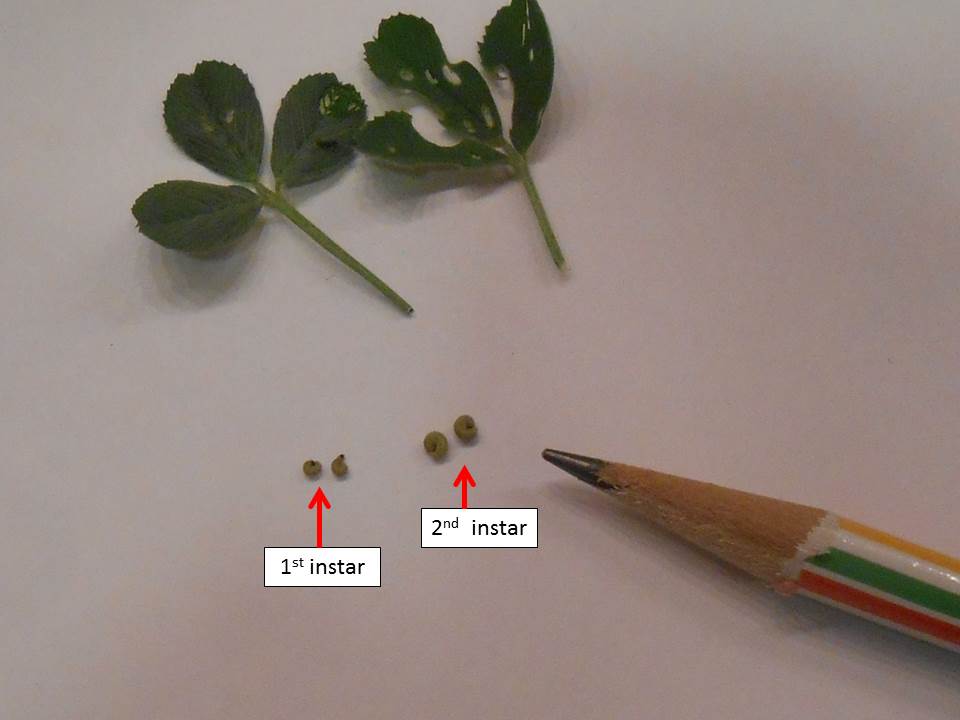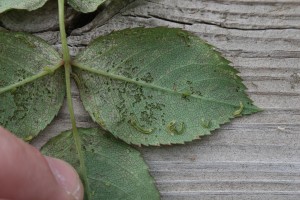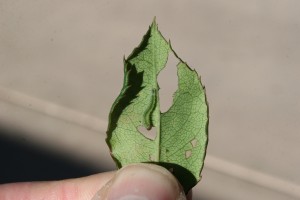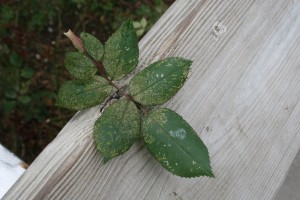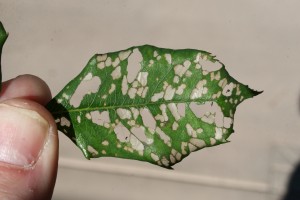–by Dr. Bob Bauernfeind
The following basic developmental sequence is applicable to caterpillars regardless their species.
Beginning at egg hatch as a 1st instar larva, a caterpillar progresses through a series of developmental instars until such time it has matured, after which it ceases feeding when ready to transform into its pupal stage. In this sequence as determined under controlled conditions, the variegated cutworm consumed 442.2 mg of artificial diet. Only a small portion (27%) of the diet was consumed through the first 6 instars. In real situations where larvae feed on plant foliage, “nibblings” go unnoticed and are inconsequential. People usually first become aware of the presence of foraging caterpillars as foliage rapidly disappears when caterpillars ravenously feed midway-towards-the-end of their final “chow hound” instar. The last instar consumed 73% of the total diet.
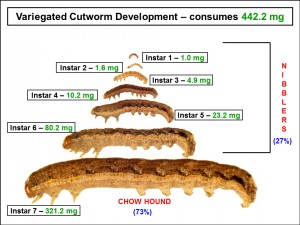
How can this information be applied to bagworm control? In the following sequence, in Weeks 1 – 5, under the green “safe” line, bags and bagworms are small. At 6 and 7 weeks, they become larger but remain under the yellow “still safe” line. Beginning at weeks 8 and 9, we have the orangish “amber alert” line. To this point, ALL ARE NIBBLERS! In weeks 10 and 11, we are under the red “danger” line as the bagworms now are into their “CHOWHOUND MODE”!
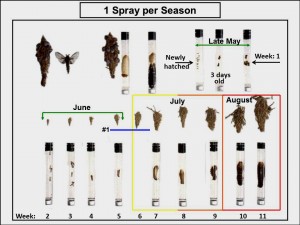
When bagworms hatch in any given year, the hatching period occurs over a 4 to 5 week period typically beginning in mid-to late May. While it is informative to know when bagworm activities begin, that should not signal the beginning of automatic weekly spray treatments. Rather, a single thorough treatment (with a contact insecticide) applied at the end of June into the first 10-14 days of July should suffice. I enlarged and bolded thorough to emphasize the importance of not merely hastily-applying a light spritzy/misty spray treatment. While such might eliminate bagworms on the periphery of a tree/shrub, bagworm populations located in the more dense inner regions will be least affected. And as insecticide residues dissipate/degrade on the outer foliage, the unaffected bagworms will eventually move out and feed unfettered.
Comes the question regarding product/insecticide-of-choice. Currently in Kansas, there are 400+ products registered for use on bagworms. I personally do not recommend any one product over another. Use any contact insecticide (locally available through retail outlets) with bagworms listed on the product label. Based upon my experiences/trials (the first dating back to 1989), I achieved near-equally effective kill against late-instar bagworms using discontinued active ingredients (chlorpyrifos, diazinon, dimethoate, parathion) as well as currently available acephate, bifenthrin, carbaryl, cyfluthrin, gamma-cyhalothrin, malathion, permethrin, spinosad and trichlorfon. Reemphasizing: what is critical/key is not the active ingredient but rather (again) THOROUGH COVERAGE of the ENTIRE tree/shrub!
